Throughout the ages, the world has observed dramatic exhibitions of wrath, zeal, and hopelessness that have substantially moulded our planet. From the red-stained French Revolution to the reformative Arab Spring, forceful revolts and disturbances have indeed reshaped history. These eruptions emerged from the collective grievances of the sidelined and subjugated, their fervent protest against unfairness, disparity, and tyrannical governments.
In today’s list, we explore history’s most violent uprisings and riots, delving into their causes, consequences, and their lasting impact on power dynamics and control.
Here are 25 Most Violent Riots and Uprisings in History
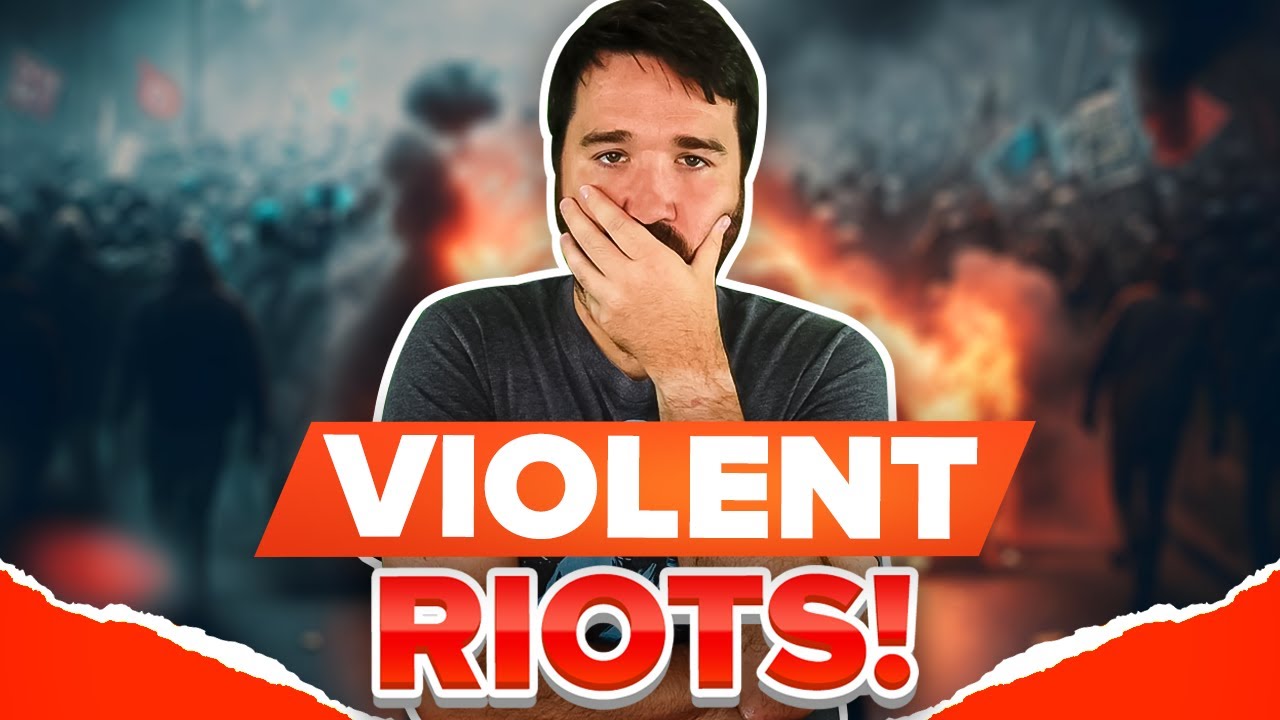
The New York City Draft Riot (United States, 1863)
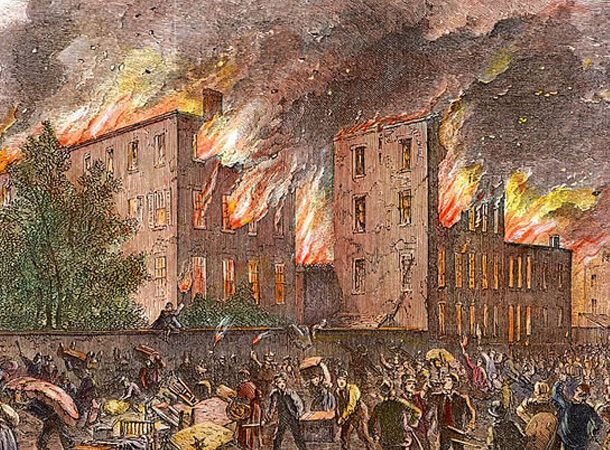 https://www.history.com/topics/american-civil-war/draft-riots
https://www.history.com/topics/american-civil-war/draft-riots The 1863 New York City Draft Riot was a prominent civil uprising during the American Civil War. It was sparked by the enforcement of conscription, which many believed unfairly affected working-class people, especially immigrants and the poor. Starting on July 13, 1863, the riot lasted for several days, with angry mobs targeting symbols of privilege, government buildings, and African Americans. Racial tensions fueled the violence, as rioters resented freed slaves competing for jobs. Arson, looting, and destruction ensued, with African Americans facing specific targeting, violence, and attacks on their homes and businesses. Law enforcement and military forces responded, resulting in clashes and casualties. The riot resulted in the deaths of more than 100 individuals, with hundreds more injured, and caused extensive damage to properties.
The Chicago Westside Riots (United States, 1968)
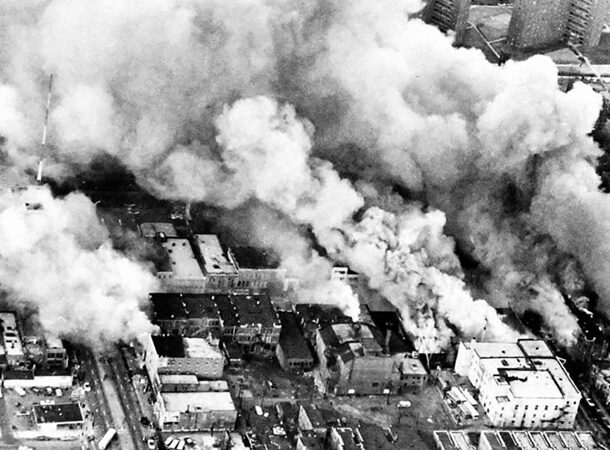 https://interactive.wttw.com/dusable-to-obama/1968-riots
https://interactive.wttw.com/dusable-to-obama/1968-riots On the fateful day of April 4, 1968, at precisely 6:01 PM, a tragic event unfolded that forever altered the course of US history. Dr. Martin Luther King, Jr., an eminent civil rights activist, fell victim to a brutal assassination in his Memphis hotel room. The repercussions of the act trickled across the United States, causing an eruption of profound anger and resentment within the black communities. Cities such as Baltimore, DC, and Chicago were swept up in violence, with Chicago at the epicenter. Within a mere day, over 30 city blocks were reduced to flames, leaving a burning sprawl in its wake. The aftermath resulted in weeks of acute food shortages, marking one of Chicago’s darkest times in recent history.
The Rodney King Riots (United States, 1992)
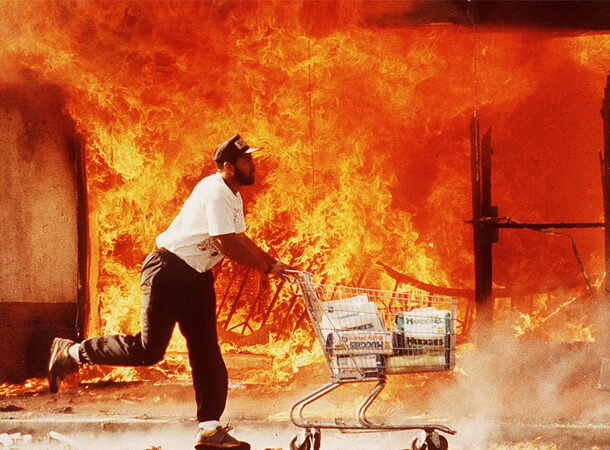 https://www.npr.org/2017/04/26/524744989/when-la-erupted-in-anger-a-look-back-at-the-rodney-king-riots
https://www.npr.org/2017/04/26/524744989/when-la-erupted-in-anger-a-look-back-at-the-rodney-king-riots The Rodney King riots began in 1992 after four police officers were acquitted after beating Rodney King, an African American driver. A viral video happened to make the rounds which clearly showed the officers’ excessive use of force. It fuelled the community’s anger and protests. However, the officers were found not guilty, and Los Angeles turned into a powder keg of resentment and rage. Chaos erupted rapidly, with violence and looting taking over the streets. Buildings were damaged, and a feeling of lawlessness consumed the city. The riots lasted six days, fueled by longstanding racial tensions and economic inequalities. They resulted in extensive destruction, over 60 deaths, and thousands of injuries and highlighted the need for societal change.
The Hong Kong Riots (China, 1967)
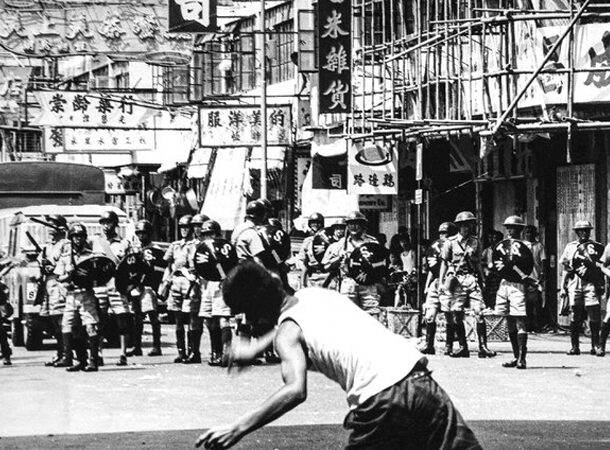 https://www.globalmediajournal.com/open-access/whose-sound-and-fury-the-1967-riots-of-hong-kong-through-the-times.php?aid=35130
https://www.globalmediajournal.com/open-access/whose-sound-and-fury-the-1967-riots-of-hong-kong-through-the-times.php?aid=35130 The Hong Kong Riots of 1967 were a period of extreme civil unrest sparked by labor strikes and political tensions inside the city. It started with a factory labor dispute but quickly developed into a widespread revolt against British colonial rule and the perceived social injustices. Police officers, government buildings, and businesses connected to the colonial authority were all targeted by pro-communist crowds. The city was overtaken by violence, and bombings, assassinations, and street brawls, became an almost everyday occurrence. The riots continued for several months, resulting in numerous fatalities and enormous disruptions to everyday life.
The Egyptian Bread Riots (Egypt, 1977)
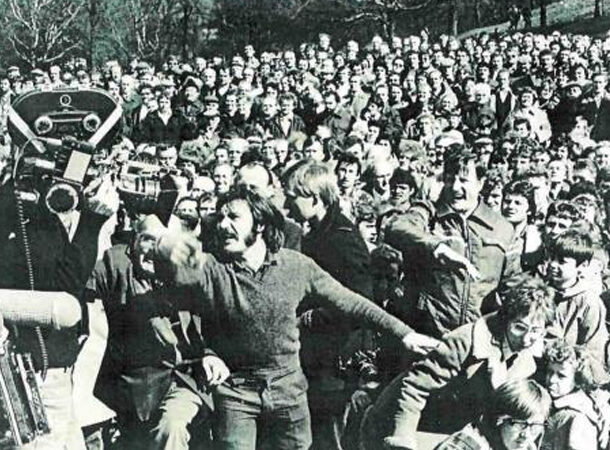 https://egyptianstreets.com/2022/01/18/45-years-on-remembering-the-egyptian-bread-intifada/
https://egyptianstreets.com/2022/01/18/45-years-on-remembering-the-egyptian-bread-intifada/ In 1974, Egypt’s President Anwar El Sadat initiated a transformative economic shift by implementing a new open-door policy. This shift from the previous regime’s position on nationalization was intended to attract domestic and foreign investment and indicated a desire for more robust relations with the US. However, the government’s decision to cancel $30 million in subsidies sparked mass protests across cities like Cairo and Alexandria. Infuriated by these sudden changes, the people expressed their outrage through demonstrations, including burning buildings and disrupting transportation. The government had to deploy the army to restore order, leading to the eventual cancellation of the new policies and the cessation of the riots, marking a significant turning point in Egypt’s history.
The Copper Riot (Russia, 1662)
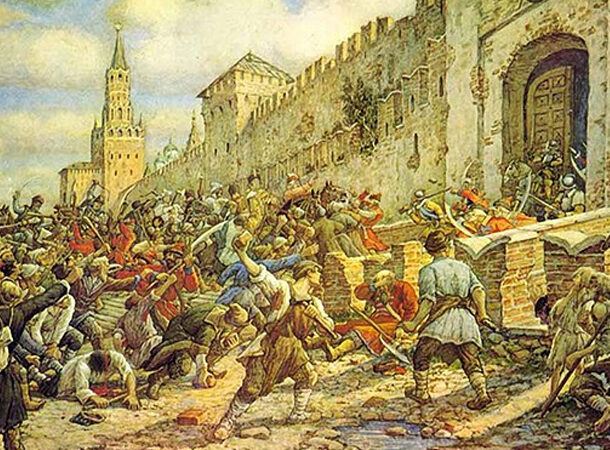 https://www.armstrongeconomics.com/research/panics/17th-18th-centuries/russian-copper-riots-of-1662/
https://www.armstrongeconomics.com/research/panics/17th-18th-centuries/russian-copper-riots-of-1662/ During Russia’s Copper Riots in 1662, widespread anger erupted due to the struggling economy. On July 25, a riot broke out in Moscow as citizens demanded the surrender of the alleged traitors to restore economic stability. They confronted the Czar in Kolomenskoye, who made promises of investigations and lower taxes. While the rioters returned to Moscow, a significant military force was mobilized. In the face of overwhelming odds, the rioters endured severe suppression orchestrated by the Czar, resulting in the execution of thousands through methods such as drowning and hanging. Although this riot lasted only one day, those who took part succeeded in persuading the administration. Copper coinage was outlawed in 1663, making the uprising successful but very deadly.
The Tulsa Race Massacre (United States, 1921)
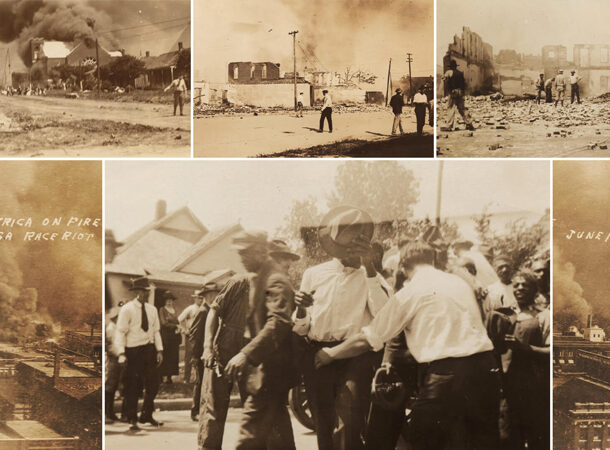 https://www.history.com/topics/roaring-twenties/tulsa-race-massacre
https://www.history.com/topics/roaring-twenties/tulsa-race-massacre The Tulsa Race Massacre of 1921 was ignited by an encounter between Dick Rowland, a black teenager, and Sarah Page, a white elevator operator. On May 30, Rowland entered Page’s elevator, and though details were unclear, rumors of an assault circulated, fueling racial tensions. The ensuing violence erupted when a white mob, supported by law enforcement, targeted the thriving African American community. The mob pillaged, burned, and destroyed homes and businesses, leaving devastation in their wake. Numerous Black residents were killed, injured, or displaced, while the once-vibrant Greenwood District was reduced to ruins. The massacre’s impact was profound, further exacerbating racial tensions and contributing to a legacy of systemic racism that reverberates in our societies to this day.
The Detroit Riot (United States, 1967)
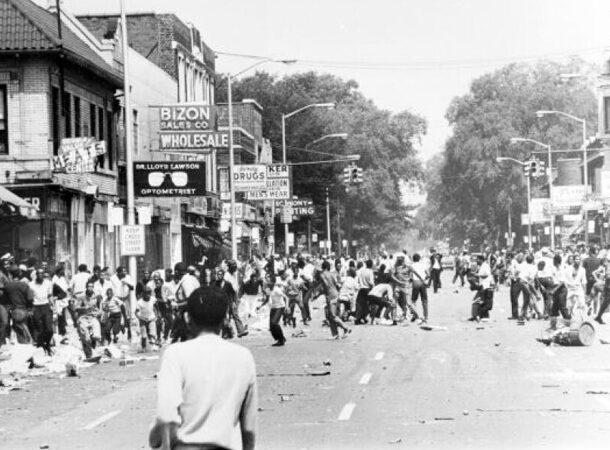 https://www.history.com/topics/1960s/1967-detroit-riots
https://www.history.com/topics/1960s/1967-detroit-riots The 1967 Detroit Riot was probably one of the most significant events of the United States civil rights movement. On July 23, 1967, Detroit police officers raided an unlicensed bar in a predominantly African American neighborhood, an unfortunate incident that could have been handled very differently. With emotions already at an all-time high in the surrounding communities, the raid sparked widespread violence, burning, looting, and clashes with city officials. The unrest lasted over a week, resulting in 43 deaths and thousands of injuries. Fires overtook the city, destroying buildings and exposing deep-seated racial tensions and existing social inequalities. In the wake of the riot, steps were taken to restore and rebuild the city; however, the effects and consequences of the riot would remain part of Detroit’s legacy for many years to come.
The Carandiru Massacre (Brazil, 1992)
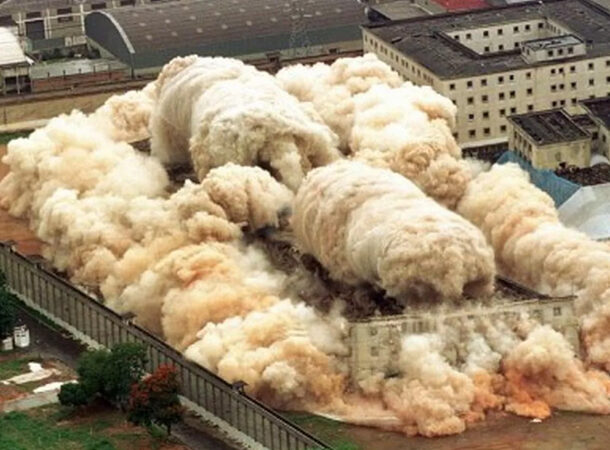 https://portal.fgv.br/en/news/carandiru-massacre-event-had-111-victims-discussed-30-years
https://portal.fgv.br/en/news/carandiru-massacre-event-had-111-victims-discussed-30-years Although this item was a prison riot, its confined nature made sure that it deserved an entry on our list today. On October 2, 1992, a brutal riot erupted inside Sao Paulo’s Carandiru Prison, which resulted in a horrific police-led massacre. Initially built in the 1950s to accommodate only 3,500 inmates, the overcrowded prison held over 8,000 prisoners at the time of the riot. The guards appeared incapable or unwilling to negotiate with the prisoners during this particular event, despite numerous previous revolts. As the riot escalated, the military police arrived and unleashed a barrage of gunfire, killing 102 inmates with automatic rifles. In a chilling twist, the rioters caused minimal damage compared to the unrelenting force of the police, who ultimately emerged unharmed and uninjured.
The Bombay Riots (India, 1992 and 1993)
 https://nwmindia.org/national-meets/national-meet-mumbai-2013/revisiting-media-coverage-of-the-1992-93-mumbai-riots/
https://nwmindia.org/national-meets/national-meet-mumbai-2013/revisiting-media-coverage-of-the-1992-93-mumbai-riots/ The Bombay Riots, also known as the Mumbai Riots, was a violent series of communal clashes in Bombay (now Mumbai), India, between 1992 and 1993. Hindu and Muslim tensions escalated due to the demolition of the Babri Masjid mosque, leading to widespread violence and destruction in the aftermath. The riots were characterized by mob attacks, arson, looting, and targeted violence rooted in religious identity. Both Hindus and Muslims experienced the repercussions, as retaliatory attacks further exacerbated the chaos. Nearly 1,000 lives were lost in Bombay alone in less than a month. The repercussions extended further, culminating in a devastating bomb blast in March 1993 that claimed the lives of over 250 people and left more than 700 injured. The riots dramatically impacted the city of Bombay, leading to significant changes in its social fabric and collective dynamics.
The Mombasa Riots (Kenya, 1992)
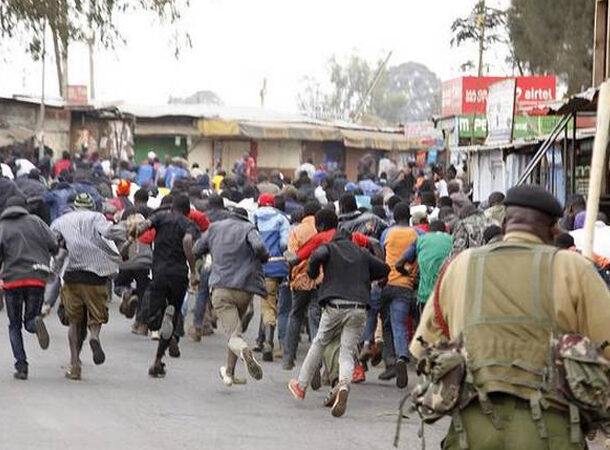 https://www.nytimes.com/1992/01/19/world/100000-kenyans-stage-protest-rally.html
https://www.nytimes.com/1992/01/19/world/100000-kenyans-stage-protest-rally.html The Mombasa Riots of 1992 were a series of violent confrontations in Mombasa, Kenya, following the announcement of election results. Close to 100 000, unhappy Kenyans took to the streets as protests erupted in Mombasa, with clashes between different ethnic and political groups. The riots involved widespread violence, including arson, looting, and attacks on individuals and property, and in less than a month, over 600,000 people had been displaced from their homes. The city was engulfed in chaos, with streets barricaded and businesses destroyed. The Mombasa Riots resulted in numerous casualties, with reports estimating that hundreds of people lost their lives and thousands were injured.
The Gujarat Riots (India, 2002)
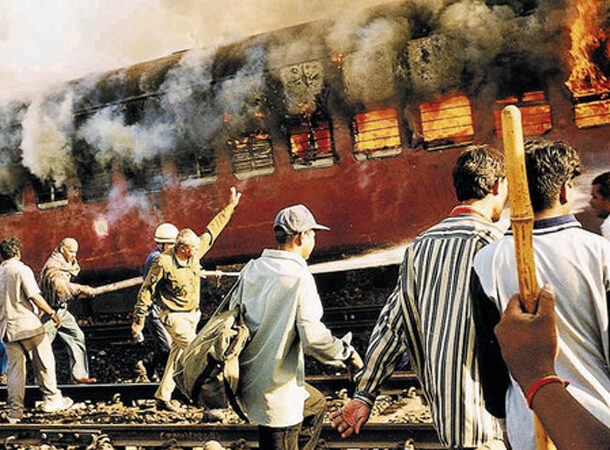 https://timesofindia.indiatimes.com/miscellaneous/2002-gujarat-riots/articleshow/60732493.cms?from=mdr
https://timesofindia.indiatimes.com/miscellaneous/2002-gujarat-riots/articleshow/60732493.cms?from=mdr The 2002 Gujarat Riots erupted after a train fire incident claimed the lives of several Hindu pilgrims. The event ignited widespread violence between Hindu and Muslim communities, including mob attacks, arson, looting, and sexual violence. The riots continued for months and saw targeted violence against Muslims, systematically destroying their neighborhoods, businesses, and places of worship. Many died, with official figures of around 1,000 casualties, although the actual death toll is believed to be much higher. Thousands were displaced, and the psychological and socio-economic impact on affected communities was profound. The Gujarat Riots remain a contentious and sensitive topic in India. Ongoing efforts for justice and reconciliation continue to address the wounds and aim to promote understanding among diverse religious and ethnic groups.
The Nika Riots (Turkey, 532)
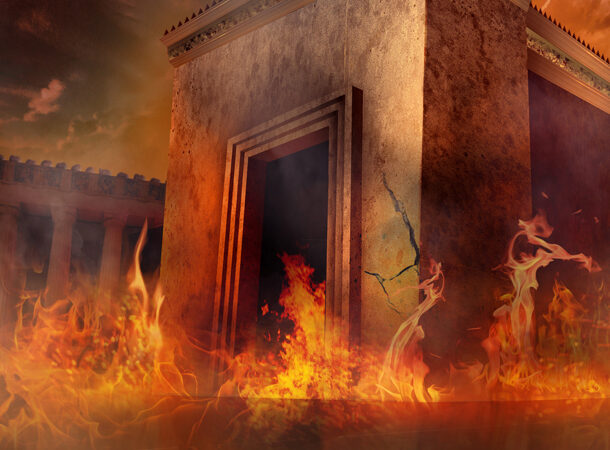 http://www.allaboutistanbul.com/nika_riot.html
http://www.allaboutistanbul.com/nika_riot.html You wouldn’t necessarily know this, but during ancient Roman times, chariot racing served as a breeding ground for hooliganism. In one notable incident, a group of athletes was arrested and executed for their involvement in murders, while two others sought refuge in a nearby church, unintentionally triggering a massive mob. These events unfolded at a critical juncture for Emperor Justinian, who faced issues around rising taxes and delicate negotiations with the Persians. Unfortunately, Justinian made a grave mistake by postponing the next chariot race. The day of the rescheduled race arrived, and the crowd, chanting “Nika!” (which meant) “Conquer!” laid siege to Justinian, nearly driving him into exile. The emperor’s response resulted in the loss of over 30,000 lives and extensive devastation, including significant damage inflicted upon the renowned Hagia Sophia in Constantinople.
The Great Arab Revolt (Palestine, 1936 - 1939)
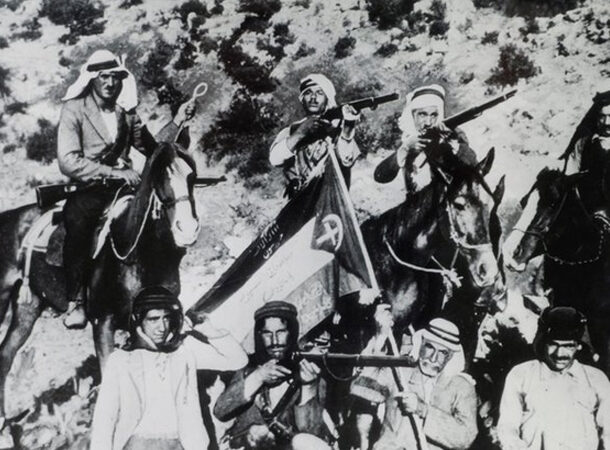 https://www.palestine-studies.org/en/node/1651180
https://www.palestine-studies.org/en/node/1651180 The Great Arab Revolt in Palestine (1936-1939) was a significant uprising led by Palestinian Arabs against British colonial rule and Jewish immigration. Beginning with nonviolent protests organized by the Arab Higher Committee, the revolt escalated as the British responded forcefully. Arab guerrilla fighters conducted attacks, and the conflict turned violent. Thousands of Palestinians suffered casualties, arrests, and exile, with British military courts and collective punishment used against suspected rebels. The British-established Peel Commission recommended partitioning Palestine into separate Arab and Jewish states, but the Arab population rejected the proposal. The British suppressed the revolt through military force, intelligence operations, and political strategies. Today, Palestine remains entrenched in enduring conflict.
The 8888 Uprising (Burma, 1988)
 http://news.bbc.co.uk/2/hi/7543347.stm
http://news.bbc.co.uk/2/hi/7543347.stm During General Ne Win’s dictatorial rule, Burma faced increasingly severe economic hindrances, finally triggering mass protests on August 8, 1988. As the demonstrations grew, the military police responded violently, leading to a crackdown. Around 500,000 defiant protesters flooded Rangoon, marching against increasingly violent police presence. Unfortunately, the situation only worsened when the police opened fire on the crowds, which resulted in the loss of hundreds of lives. The rioters were eventually suppressed, with an estimated death toll of 3,000 people at the hands of the ruling junta. It wasn’t until 2010 that Burma finally held its first democratic election, underscoring the ongoing struggle for democratic governance in the nation.
The March 1st Movement (Korea, 1919)
 http://www.britannica.com/EBchecked/topic/364173/March-First-Movement
http://www.britannica.com/EBchecked/topic/364173/March-First-Movement Following Japan’s annexation of Korea in 1910, a strong desire for sovereignty began to take hold among the Korean people. Inspired by President Woodrow Wilson’s influential “Fourteen Points” speech, which emphasized the right to self-determination, an educated public united. Choosing March 1, 1919, the commemoration date of the late Korean emperor, as their starting point, they embarked on a historic uprising against foreign rule. Though initially peaceful, the protests quickly escalated when Japanese troops responded violently. More than two million civilians participated in the demonstrations, resulting in the imprisonment of 46,000 and the loss of 7,500 lives. Despite falling short of its initial goal, the March 1st Movement significantly undermined Japanese control and laid the groundwork for establishing the Provisional Government of the Republic of Korea, an influential entity in Korean history.
The Romanian Peasants’ Revolt (Romania, 1907)
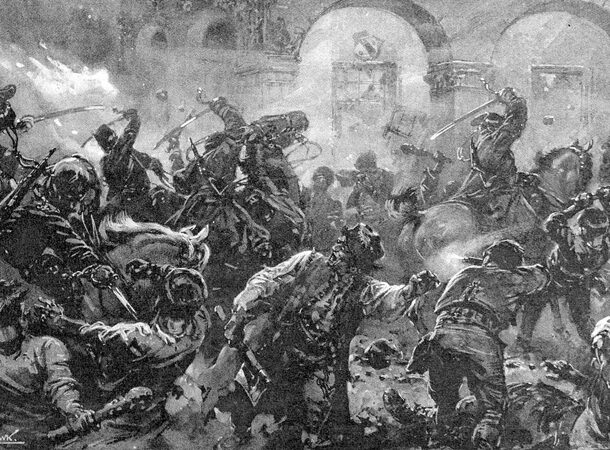 http://www.roconsulboston.com/Pages/InfoPages/Interviews/Latham/PeasantRevolt.html
http://www.roconsulboston.com/Pages/InfoPages/Interviews/Latham/PeasantRevolt.html The Romanian Peasants’ Revolt in 1907 was driven by the grievances of the peasant population in rural Romania. Frustrated by harsh living conditions under wealthy landowners, the peasants, who made up the majority but owned little land, initiated protests and riots that quickly spread throughout the country. While initially connected to anti-Semitism, the revolt expanded beyond areas with a significant Jewish presence. It didn’t take long to turn violent. The Conservative government collapsed, and the Liberals seized power, declaring a state of emergency and mobilizing over 100,000 troops to suppress the revolt. The rebellion was quelled within a week, and the government regained control. Although the exact casualty count remains uncertain, estimates suggest around 11,000 lives were lost.
The Great Calcutta Killing (India, 1946)
 https://www.cambridge.org/core/books/abs/making-peace-making-riots/great-calcutta-killing-august-1946/8DE32B72D4C38B94F456898DA50AF6A4
https://www.cambridge.org/core/books/abs/making-peace-making-riots/great-calcutta-killing-august-1946/8DE32B72D4C38B94F456898DA50AF6A4 The Great Calcutta Killing, or Direct Action Day, was a deadly riot that took place on August 16, 1946, in Kolkata, British India. The violent eruption arose from political tensions between the Muslim League and the Indian National Congress during the 1940s Constituent Assembly. Muslim groups targeted Hindus, unleashing large-scale attacks that escalated into horrific acts of violence, including beatings, rapes, and people being buried alive. In retaliation, Hindu groups launched counter-attacks. The clashes resulted in an estimated 4,000 deaths and 10,000 people becoming homeless, leaving a trail of destruction throughout the city. This tragic event served as a stark reminder of the challenges faced during India’s struggle for independence and the subsequent Indian Partition that led to the creation of India and Pakistan.
“The Bloody Week” (France, 1871)
 http://libguides.northwestern.edu/siegeandcommune
http://libguides.northwestern.edu/siegeandcommune “The Bloody Week,” or “La Semaine Sanglante,” took place during the Paris Commune in 1871, a socialist revolutionary government that briefly controlled Paris. The uprising, sparked by fears of monarchy restoration and the disarmament of the National Guard, encountered a harsh military response from the French government. On May 21, government troops launched a brutal assault on a poorly defended area of Paris, engaging in ruthless violence against anyone suspected of supporting the Commune. The week-long conflict resulted in the deaths of up to 20,000 innocent civilians, while government casualties remained minimal. The violent crackdown continued after the military’s victory, with nearly 40,000 arrests and executions of suspected Communards.
The 228 Massacre (Taiwan, 1947)
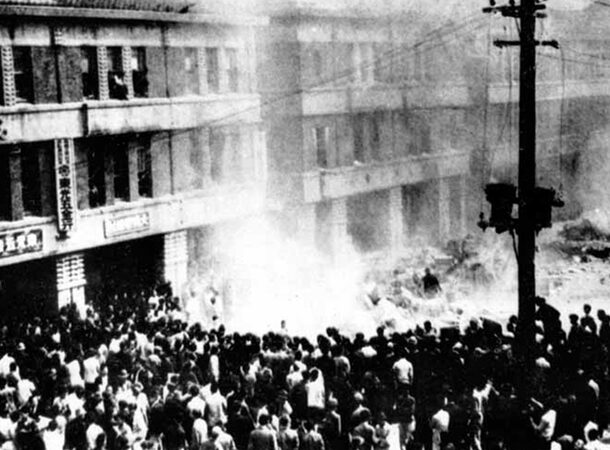 http://www.taiwandc.org/228-intr.htm
http://www.taiwandc.org/228-intr.htm After Japan’s surrender in World War II, Taiwan was transferred to China as a temporary military occupation. However, the Chinese quickly established a repressive regime, which led to public discontent and economic hardships, especially for the poor. The tipping point came on February 28, 1947, when a widowed woman selling cigarettes without a license was arrested and brutally beaten. This incident sparked massive protests throughout the region. Government officials deceptively feigned to negotiate while secretly mobilizing troops to suppress the resistance. On March 8, the military arrived and violently opened fire on protesters and civilians. The brutal crackdown resulted in the deaths of up to 28,000 people, with numerous random arrests. Taiwan endured the “White Terror” period of martial law until 1987, a time that was marked by government oppression and pervasive fear among the population.
The El Salvadoran Peasant Uprising (El Salvador, 1932)
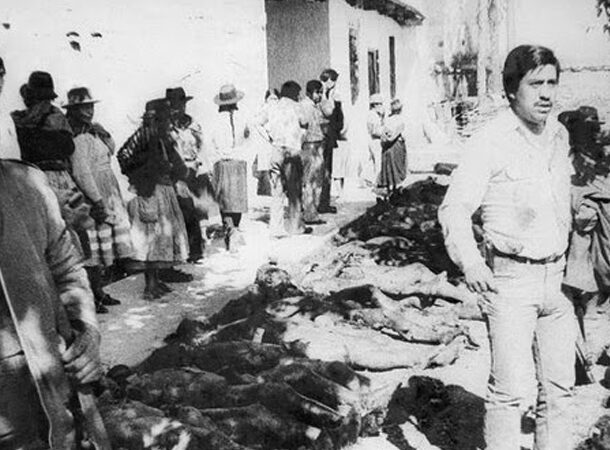 http://www.destinyschildren.org/en/timeline/the-massacre-in-el-salvador/
http://www.destinyschildren.org/en/timeline/the-massacre-in-el-salvador/ In the late 1800s, El Salvador’s booming coffee industry consolidated land into large plantations, exacerbating the wealth disparity and driving indigenous communities into extreme poverty. The collapse of the coffee market after the 1929 stock market crash and the Great Depression devastated El Salvador’s economy. In response, a peasant army led by Agustín Farabundo Marti rose up, demanding immediate change. The military and local police launched a brutal campaign of repression known as “La Matanza” or “The Slaughter.” Indigenous individuals were mercilessly massacred, often solely based on their appearance or traditional clothing. The death toll varies widely, ranging from 10,000 to 30,000 lives lost. To make matters worse, the indigenous population had to conceal their cultural heritage, resulting in the devastating loss and erasure of their rich indigenous culture.
The Jeju Uprising (South Korea, 1948–1949)
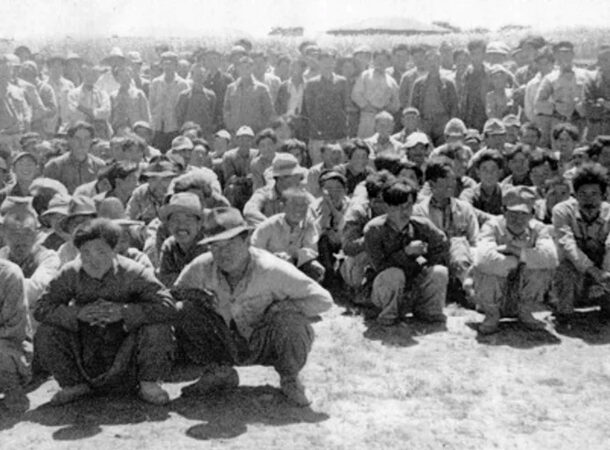 http://www.jejuweekly.com/news/articleView.html?idxno=657
http://www.jejuweekly.com/news/articleView.html?idxno=657 In 1947, amidst the uncertain future of a unified Korea, the UN and the Soviet Union clashed over the country, leading to a divided nation. Deep skepticism surrounded the UN-backed elections on the island of Jeju, sparking peaceful protests that were met with fatal police gunfire, claiming the lives of six individuals in 1947. The following year, widespread riots erupted, characterized by attacks on government buildings. When negotiations between the conflicting forces collapsed, the South Korean government launched a systematic campaign to crush the rioters’ resolve. The military carried out indiscriminate killings, and hundreds of young girls were kidnapped, raped, and abused. While estimates vary, the commonly cited figure is 60,000 deaths, amounting to one-fifth of the island’s population. The brutal crackdown reduced approximately 70 percent of the island’s villages to ashes.
The Tibetan Uprising (Tibet, 1959)
 http://www.fas.harvard.edu/~hpcws/jcws.2006.8.3.pdf
http://www.fas.harvard.edu/~hpcws/jcws.2006.8.3.pdf After the Chinese occupation of Tibet following World War II, escalating tensions led to violent confrontations. The presence of the Chinese People’s Liberation Army was a constant reminder of Tibetans’ unjust treatment. When the Dalai Lama was invited to a Chinese headquarters in March 1959, a crowd of around 10,000 people sensed a trap and surrounded him. Anti-Communist and anti-Chinese protests erupted in Lhasa on March 10. Nine days later, Chinese forces bombarded Norbulingka, the Dalai Lama’s palace, sparking widespread outrage. Despite the rebels’ resistance, the uprising lasted only two days before the Chinese military crushed it. The brutal crackdown claimed the lives of around 86,000 Tibetans, vividly illustrating the immense suffering endured under Chinese rule and highlighting the formidable challenges they encountered in their quest for autonomy and cultural preservation.
La Violencia (Colombia, 1948-1960)
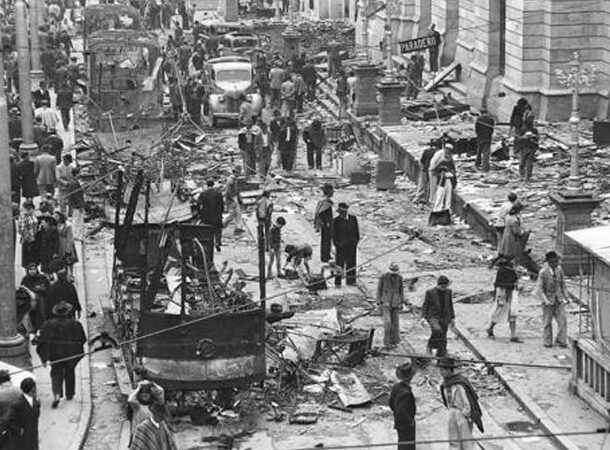 http://www.latinamericanstudies.org/colombia/la-violencia.htm
http://www.latinamericanstudies.org/colombia/la-violencia.htm In 1948, the assassination of presidential candidate Jorge Eliécer Gaitán triggered Colombia’s Bogotazo riots, resulting in nearly 5,000 deaths within 10 hours. The aftermath was severe oppression, with sporadic rural unrest that continued for years. Under President Laureano Gómez, Liberal Party members were targeted as communists and adversaries. The crackdown escalated, causing more than 1,000 deaths every month.
In 1953, General Gustavo Rojas Pinilla assumed power, promising to quell the violence of La Violencia. However, his promises remained unfulfilled. Economic hardships caused by a significant decline in coffee prices led to Rojas Pinilla’s removal by a military junta. A subsequent civilian government gradually brought an end to the sporadic riots. 200,000 lives were lost throughout this turbulent period, and an additional 800,000 people were injured.
The Indian Partition (India, 1947)
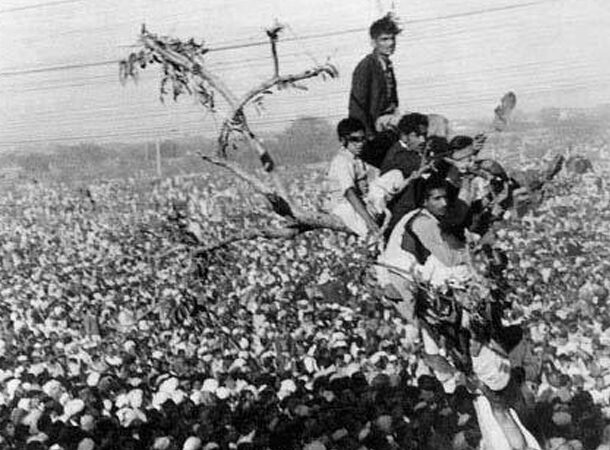 http://www.bbc.co.uk/history/british/modern/partition1947_01.shtml
http://www.bbc.co.uk/history/british/modern/partition1947_01.shtml After nearly a century of British rule, India achieved independence in 1947. The British partitioned the land and established Pakistan in the western regions, where the Muslim population was predominant. This division led to the displacement of over 10 million people, who were relocated based on their religious affiliation. The hastily drawn border between India and Pakistan sparked violent riots, particularly affecting Punjab and Bengal.
The atrocities committed during this period were often genocidal in nature, targeting pregnant women and children. Both sides engaged in acts of genital mutilation, reflecting the religious extremism that had plagued the region for years. The British decision to create separate Muslim and Hindu countries exacerbated these tensions. When the violence eventually subsided, over one million lives had been lost.



























